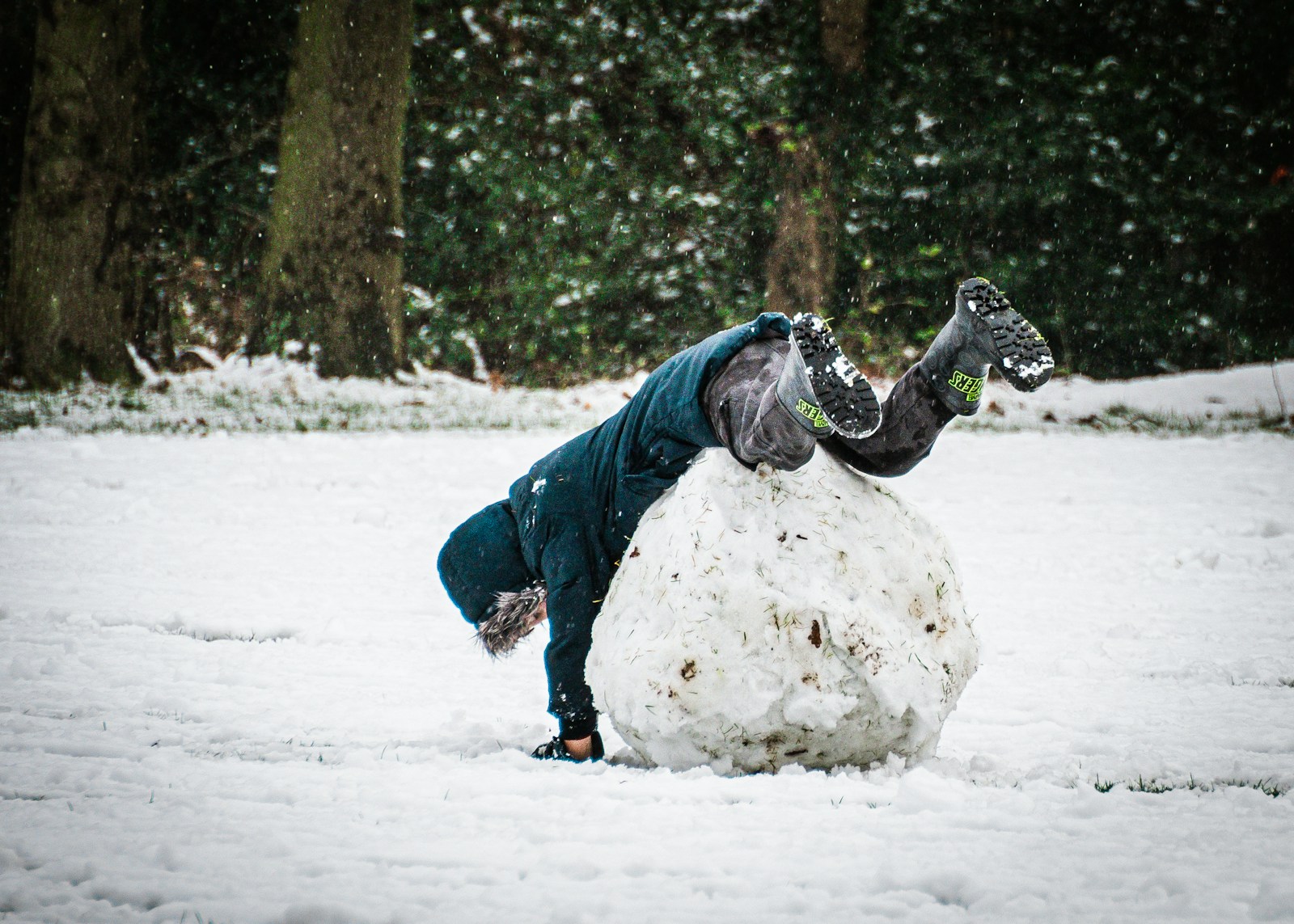
Schneemann

snowman
The German word for snowman is 'Schneemann'. It is used in the same way as in English, to refer to a figure made of snow, typically with a carrot for a nose, coal for eyes and mouth, and sticks for arms. The word can also be used metaphorically to refer to someone who is pale and round, like a snowman.
Example sentences using: Schneemann
Ich habe heute einen großen Schneemann gebaut.

I built a big snowman today.
In this sentence, the speaker is talking about a snowman they built today. 'Ich' translates to 'I', 'habe' is the first person singular present of 'haben' which translates to 'have', 'heute' is 'today', 'einen' is the accusative of 'ein', indicating 'a' or 'an', 'großen' is the adjective 'big', and 'Schneemann' is 'snowman'. The verb 'gebaut', in this context, translates to 'built'.
Der Schneemann in unserem Garten ist sehr hoch.

The snowman in our garden is very tall.
In this sentence, the speaker is referring to a tall snowman located in their garden. 'Der' is the masculine for 'the', 'Schneemann' is 'snowman', 'in' is 'in', 'unserem' is a possessive pronoun meaning 'our', 'Garten' is 'garden', 'ist' is the third person singular present of 'sein' which translates to 'is', and 'sehr hoch' means 'very tall'.
Das ist der schönste Schneemann, den ich je gesehen habe.

That is the most beautiful snowman I have ever seen.
This sentence is expressing that the speaker is seeing the most beautiful snowman they have ever seen. 'Das' translates to 'that', 'ist' is the third person singular present of 'sein' which translates to 'is', 'der schönste' translates to 'the most beautiful', 'Schneemann' is 'snowman', 'den ich je gesehen habe' translates to 'I have ever seen'.